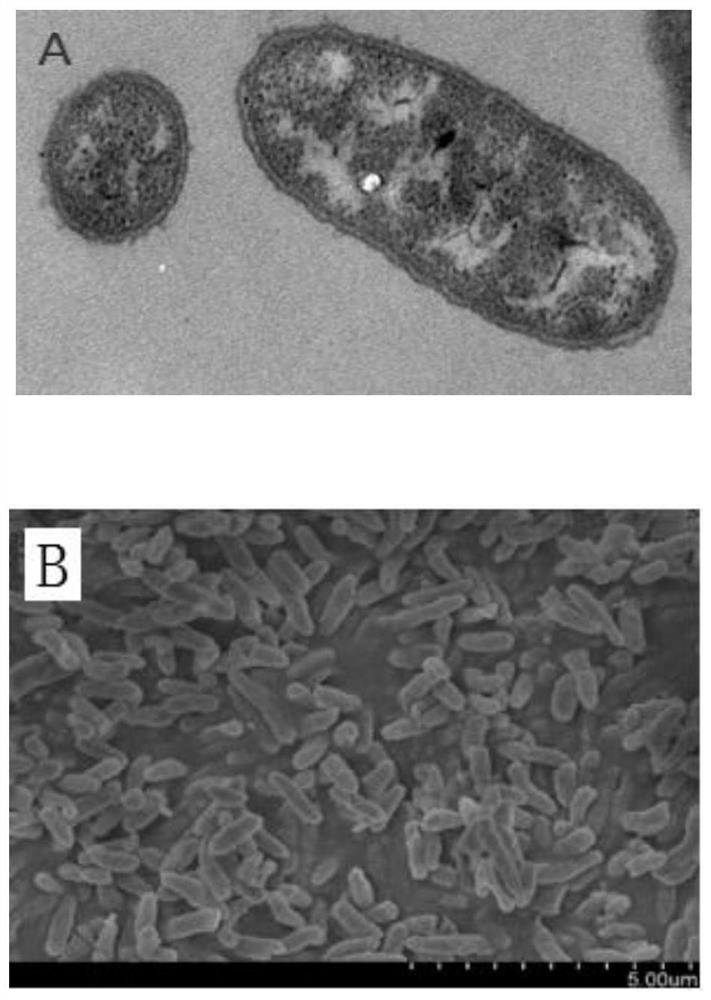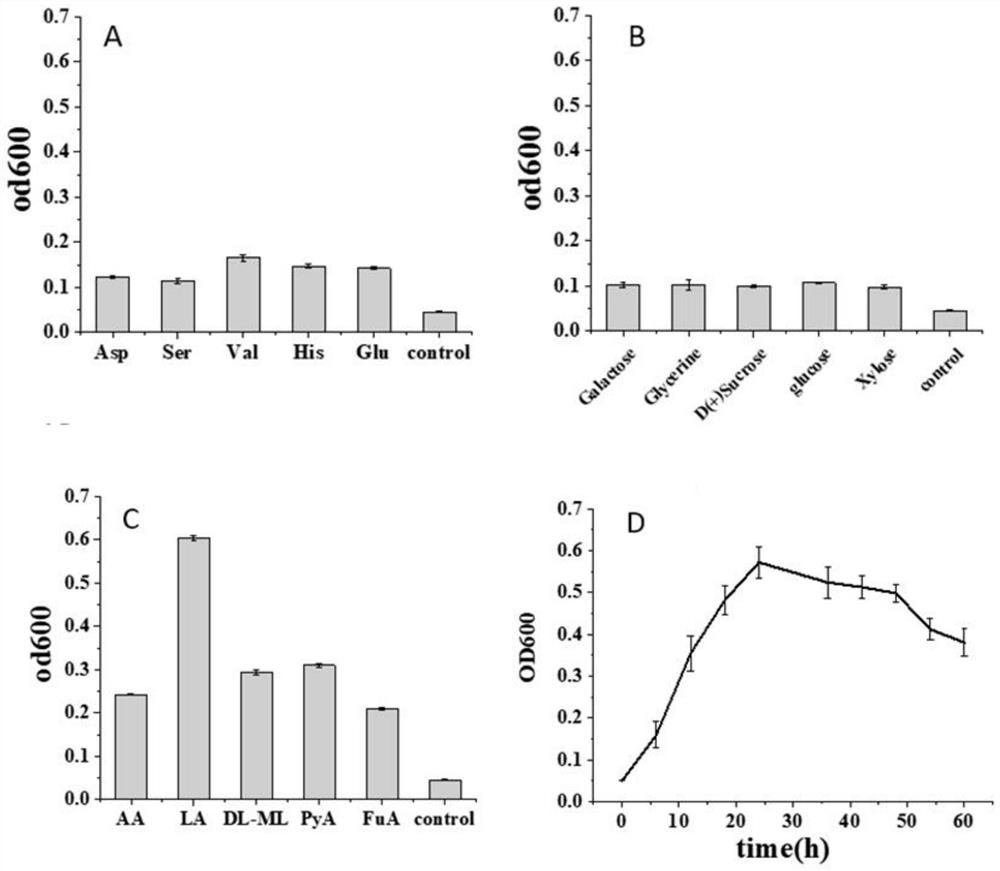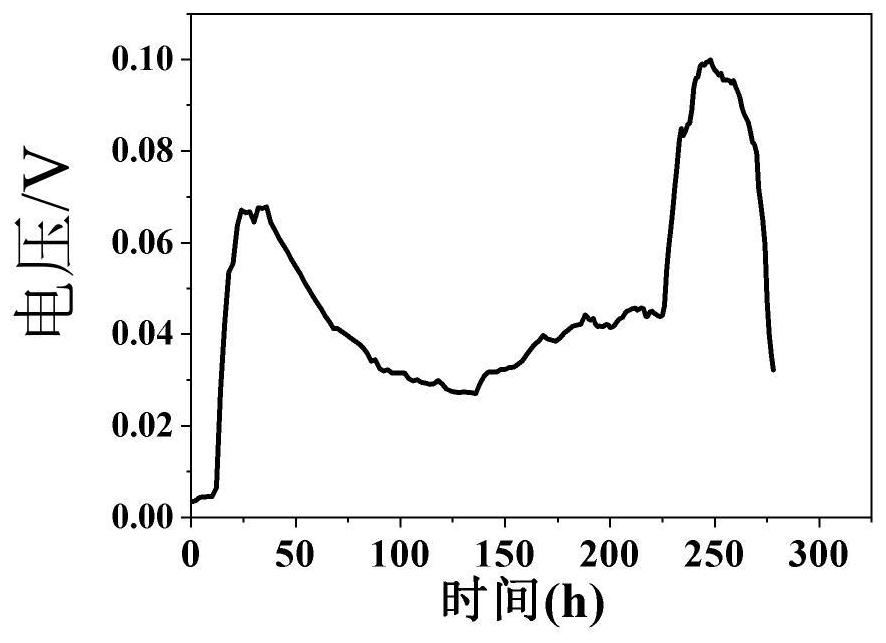A strain of algal Shewanella scs-1 and its application in microbial electricity production
A technology of scs-1 and Shewanella, which is applied in the direction of microorganism-based methods, microorganisms, microorganisms, etc., can solve the problems of limiting the application of microbial electricity production and the influence of strains on electricity production capacity, etc.
- Summary
- Abstract
- Description
- Claims
- Application Information
AI Technical Summary
Problems solved by technology
Method used
Image
Examples
Embodiment 1
[0019] Obtaining of the algae Shewanella algae scs-1.
[0020] The sea mud and seawater of the present invention are all collected in the ocean near China's Hainan Island, and the samples are stored in a 4 ° refrigerator. The collected samples are enriched by assembling a microbial fuel cell. The battery is a bipolar chamber H type, wherein the anode chamber (working volume 140mL) and cathode chamber (working volume 140mL), separated by DuPont Nafion 117 proton exchange membrane; anode using pretreated carbon cloth (2.5cm×2.5cm), cathode using pretreated carbon cloth (2.5cm×3cm) . Place 60ml of anolyte (see Table 1), 60ml of seawater, and 20ml of sea mud in the anode chamber, add 140ml of catholyte (see Table 2) to the cathode chamber of the battery, connect a 2000 ohm resistor to form a closed loop, and place it in 30°C for incubation Cultivate statically in the box, and use a digital multimeter to measure the output voltage of the microbial fuel cell (such as image 3 show...
Embodiment 2
[0028] Screening of optimal substrates for Shewanella algae scs-1
[0029] Configure basal medium containing different substrates, add the medium to a 96-well plate, inoculate 5% of the seaweed Shewanella algaescs-1 seed solution, and place it at a speed of 200 rpm and a temperature of 30°C cultured in a shaker, and measured its OD600 at 24 hours using a microplate reader. Wherein the size of OD600 has reflected the growth condition of bacterial strain under this substrate, (as figure 2 shown), figure 2 It is the substrate utilization of Shewanella algae scs-1 and the growth curve under the optimal substrate. Among them, A is the OD600 of 25h when 20mM amino acid is used as substrate; B is the OD600 of 25h when 20mM organic acid is used as substrate; C is 25h of growth when 20mM carbohydrate is used as substrate OD600 of D; D is the growth curve under the condition that the optimum substrate lactic acid concentration is 20mM. After experiments, the optimal substrate of S...
Embodiment 3
[0034] Application of Shewanella algae scs-1 in Seaweed Production of Electricity
[0035] Take out the screened strains from the -80°C refrigerator, activate by streaking, inoculate the activated bacteria into LB liquid medium containing 3.4% sodium chloride, and place them in a shaker with a rotation speed of 200 rpm and a temperature of 30°C Cultivate overnight in medium to obtain primary seed solution.
[0036] The primary seed liquid was transferred to 400 ml of anolyte shown in Table 1 for cultivation. The anolyte used sodium lactate as the electron donor, and cultivated it in a shaker at a speed of 200 rpm and a temperature of 30°C for 16 hours to obtain a fermented liquid.
[0037] Start the dual-chamber microbial fuel cell, the anode area in the cell is 1*1cm 2 , the cathode area is 2.5*3cm 2 , adjust the OD600 of the obtained fermented liquid to 1 with fresh anolyte to obtain a diluted liquid. Take 140ml of diluted solution and add it to the anode chamber, take 1...
PUM
 Login to View More
Login to View More Abstract
Description
Claims
Application Information
 Login to View More
Login to View More - R&D
- Intellectual Property
- Life Sciences
- Materials
- Tech Scout
- Unparalleled Data Quality
- Higher Quality Content
- 60% Fewer Hallucinations
Browse by: Latest US Patents, China's latest patents, Technical Efficacy Thesaurus, Application Domain, Technology Topic, Popular Technical Reports.
© 2025 PatSnap. All rights reserved.Legal|Privacy policy|Modern Slavery Act Transparency Statement|Sitemap|About US| Contact US: help@patsnap.com



